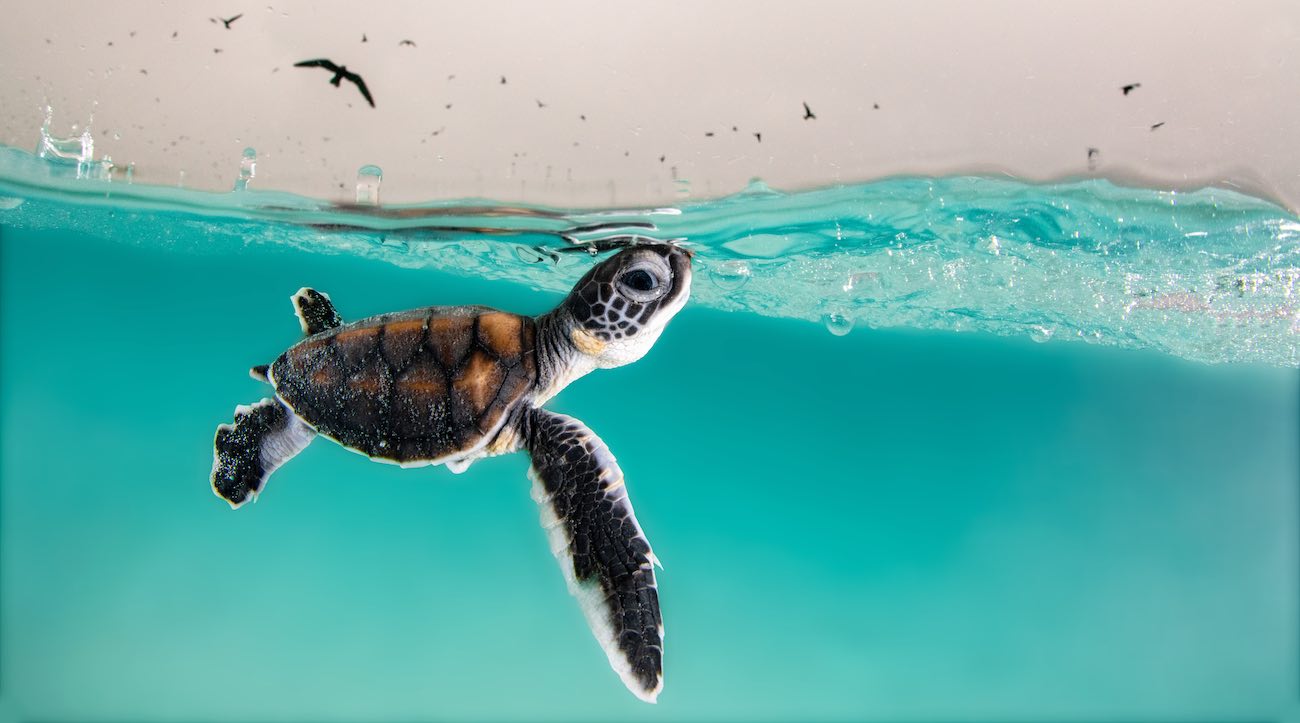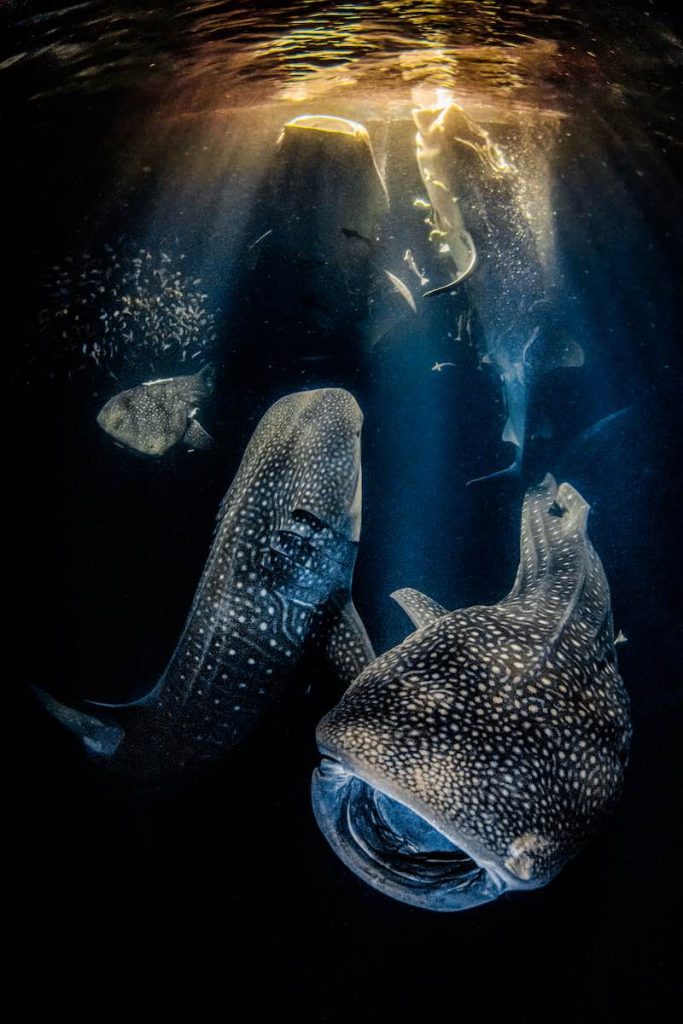
An astounding photo of five whale sharks, feeding together at night in the waters of the Maldives has won the 2022 Underwater Photographer of the Year contest.
Rafael Fernandez Caballero from Spain triumphed over 4200 underwater pictures entered by photographers from 71 countries. The photo captures a unique ocean event, taken in demanding photographic conditions.
“Giants Of The Night” features five whale sharks, the biggest fish in the world, feeding together on nocturnal plankton that have been concentrated in the lights of a boat. “It was already incredible when one whale shark came to our boat,” explains Fernandez. “But more and more kept arriving. I was diving with Gador Muntaner, a shark researcher, who couldn’t believe it, as their numbers grew.”
“He counted 11 sharks that night – a once in a lifetime encounter that nobody thought was possible.”
Competition judge, Peter Rowlands, commented, “this image took my breath away from the first viewing and I never tired coming back to it.” Judge Alex Mustard said, “photography needs light— and simply recording these giants in a dark ocean is a massive achievement.”
Founded in 1965 by Rowlands, a British photographer, the Underwater Photographer of the Year contest has 13 categories, testing photographers with themes such as Macro, Wide Angle, Behavior—as well as categories for photos taken specifically in British waters.
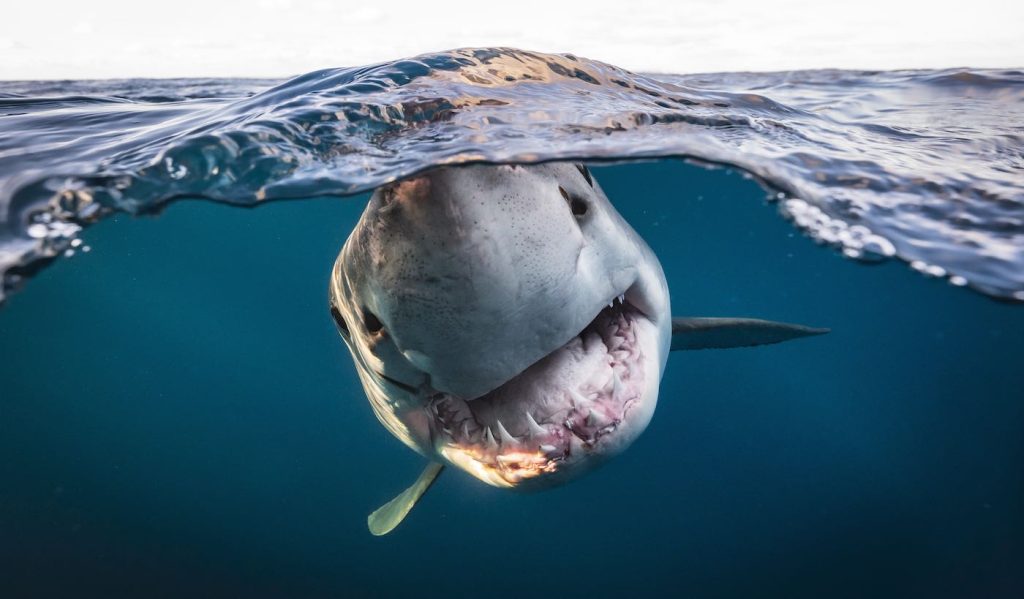
Matty Smith, an Englishman now living in Australia, was named as British Underwater Photographer of the Year 2022 for a portrait of a great white shark taken in the Neptune Islands, South Australia.
To produce “Great White Split” Smith build a special supersize dome port for his camera, as well as a carbon pole and remote trigger to allow him to get this revealing perspective.
“I had wanted to shoot a charismatic over/under portrait for years,” explained Smith. “Some techniques I had previously tried failed terribly, so this time I designed and constructed my own equipment to get the camera exactly where I wanted. Surprisingly, the sharks were instantly attracted to the camera, in fact it was a battle to stop them biting it!”
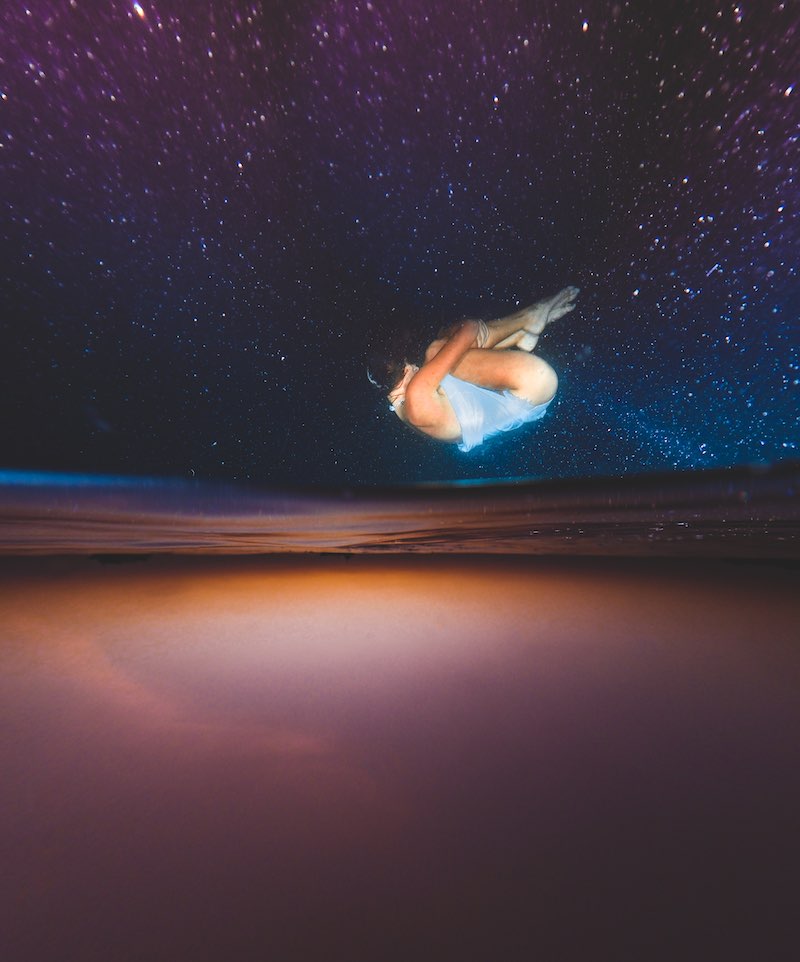
The competition also aims to promote new photographic talent.
Quico Abadal, from Spain, was named as Up & Coming Underwater Photographer of the Year for a creative image “Supernova In Paradise”. Adabal’s photo was taken at sunset off Sairee Beach, Koh Tao, Thailand and is purposely shown upside down.
“This photo features Jeniya, who moves so poetically in the water,” explained Abadal. “What I like about this photograph is the imperfection of backscatter in the dark water, creating the feeling of outer space and making it perfect to me.”
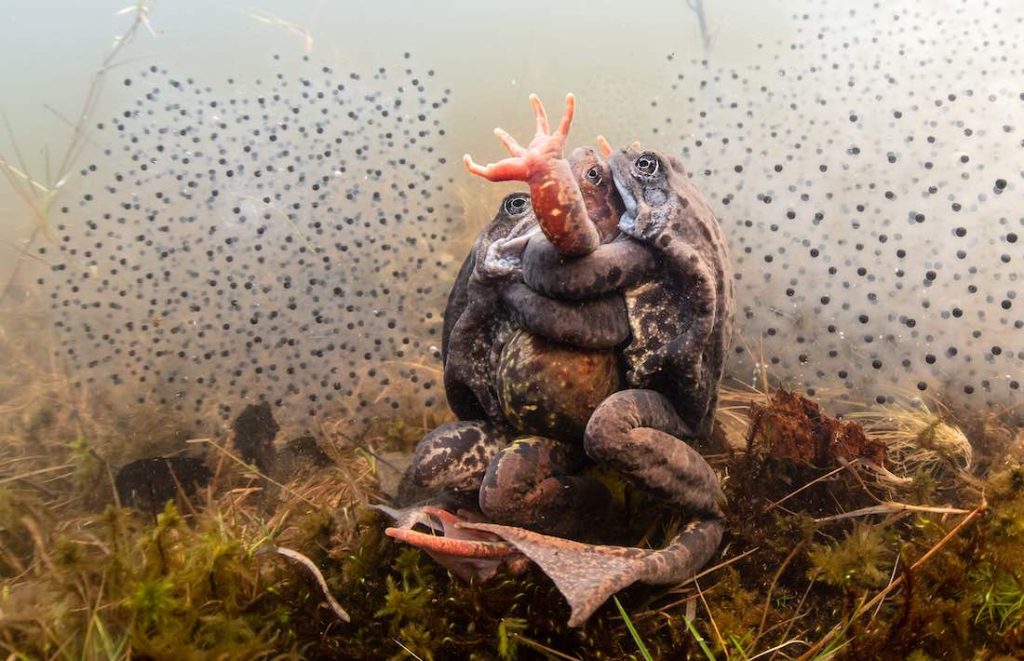
The winner of the My Backyard category was Pekka Tuuri of Finland. He spent four days and four nights in April in a local pond—wearing a drysuit with argon, and lots of undergarments—to capture a photo of frogs mating, and called it: All you need is love!
“I floated and stayed put among the frogs and quite soon they accepted me and my camera as a part of the scenery. The frogs climb on top of my camera, make grunting sounds in my ears and squeeze between my face and the backplate of the camera. The active spawning time lasts about two days and nights. What an experience!”
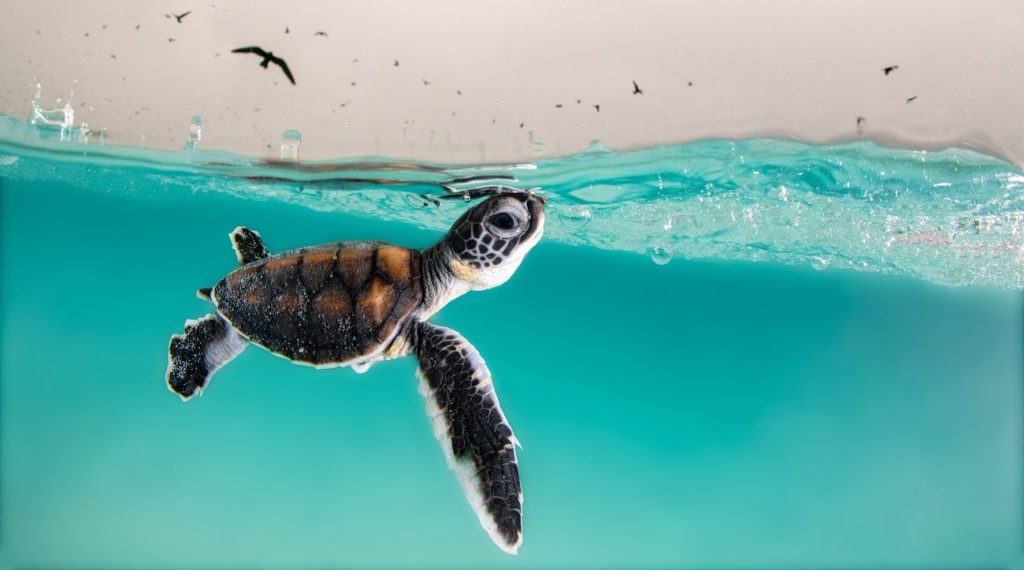
Taking third place in the category of Wide Angle, Hannah Le Leu of Australia captured a green sea turtle hatchling at Heron Island and captioned the photo: Against All Odds.
“It cautiously surfaces for air to a sky full of hungry birds. Against all odds, this hatchling must battle through the conditions of a raging storm whilst evading a myriad of predators,” says Hannah. “Not only has the tropical storm brought out thousands of circling birds, but there are also patrolling sharks and large schools of fish on the hunt for baby turtles. Only one in 1000 of these hatchlings will survive.”
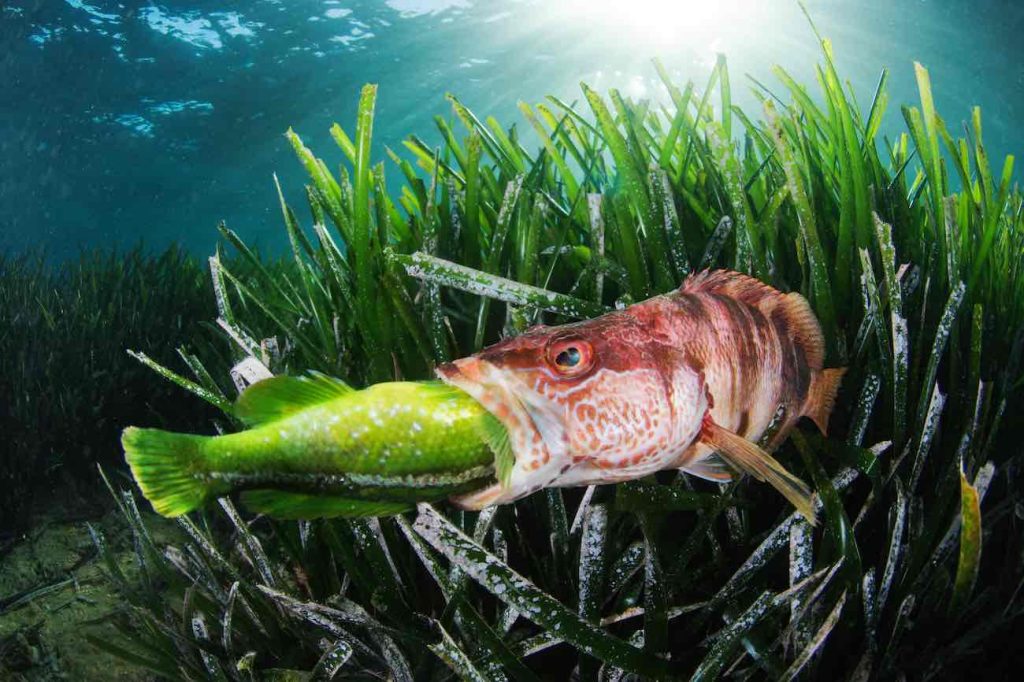
A runner up in the category of Behavior, Javier Murcia, also from Spain, submitted ‘The Circle of Life’.
RELATED: See the Stunning Winners of the Northern Lights Photographer of the Year Competition
“A diseased species is usually easy prey for a predator. In this case, a Mediterranean predatory fish has hunted a green fish (Labrus viridis), abundant in the Mediterranean. The moment was unique, the green wrasse swam slowly and roughly, it was probably sick, and a few meters away I could see the sawing hiding among the dense posidonia meadow to hunt it down. It was a matter of being patient and in the blink of an eye I caught it. It was so interested in swallowing it that I was able to get within a few inches without flinching.”
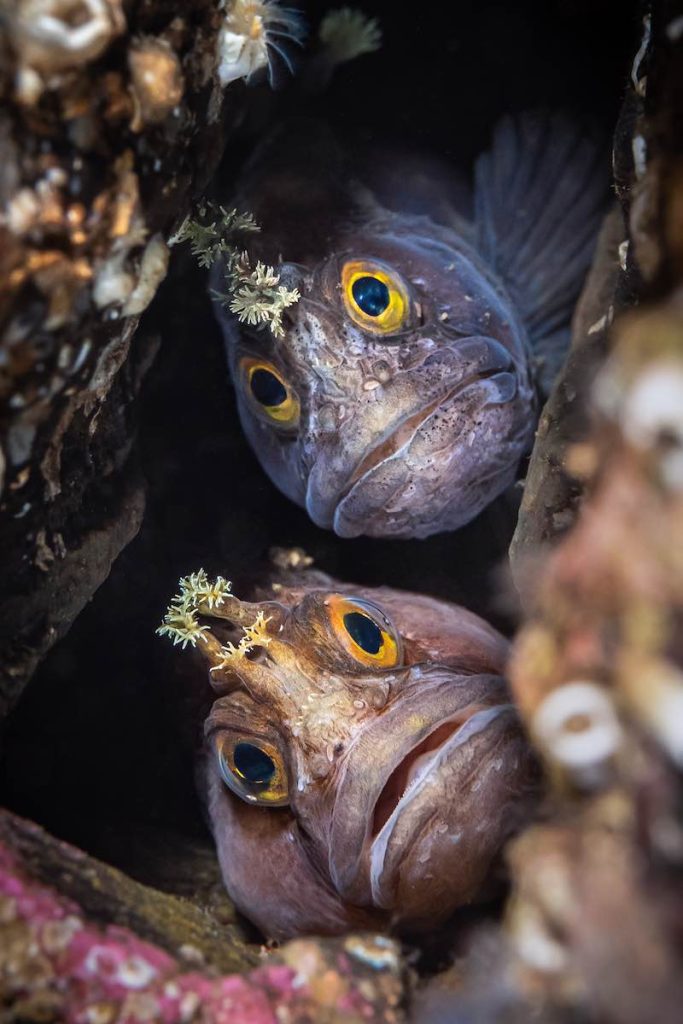
The winner of the category, British Waters Macro, was Dan Bolt, from the UK with his image, Best Buddies.
“2021 was the 10 year anniversary of my first trip to the beautiful Loch Carron. I’m not very good at finding Yarrels blennies, (but) we were diving on an area of reef, and after an excited squeal and waving of a torch in my direction I dropped down to see that my buddy had found not one, but two beautiful little blennies holed up in a crack in the rock. Having my long macro lens on was an advantage as I could stand-off from the reef enough to get some light into their home so we could all see their some-what bemused little faces. Best buddies for sure!”
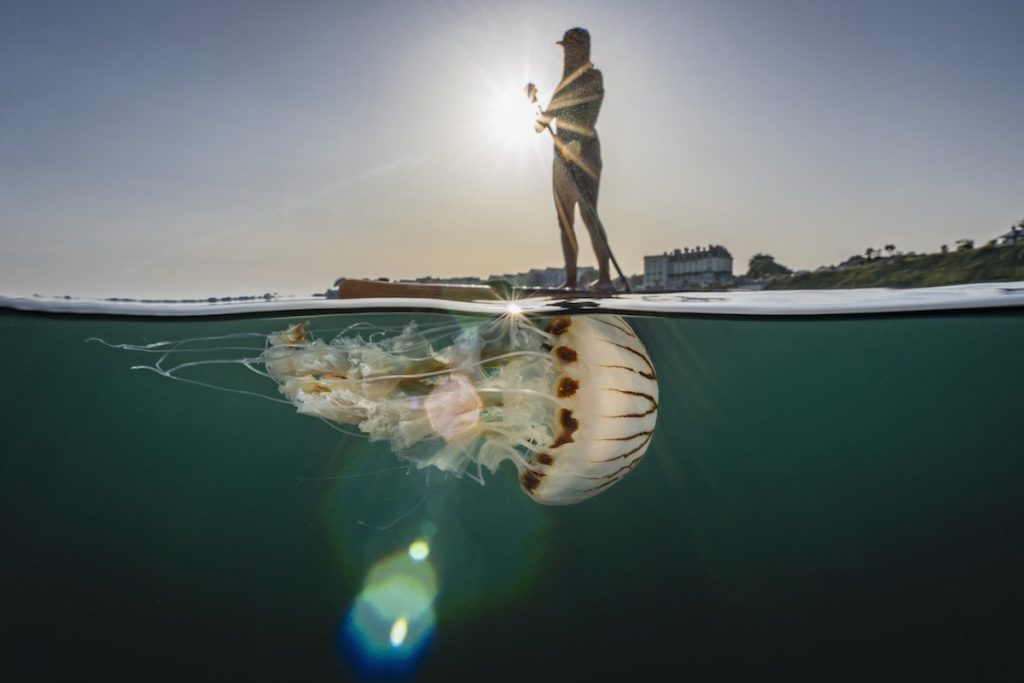
UK photographer Lewis Michael Jefferies won the category called Living Together with his image entitled, A Peaceful Coexistence.
“In the summer months Jelly fish frequent the British isles in larger numbers, thought to be attracted by the warmer waters. In 2021, there were huge numbers of these Compass jellyfish in Falmouth Bay. It was a perfect summers evening – clear and calm with hardly a breath of wind. We grabbed the paddle board and camera and headed to the beach in search of jellyfish. I had a sunset shot like this in mind and fortunately all the elements lined up to create something quite memorable.
“I hope my image can inspire others to explore and appreciate the wonders that are found right in our backyard, in British waters,” says Jefferies.
SEND Some Ocean Beauty to Friends by Sharing on Social Media…




















